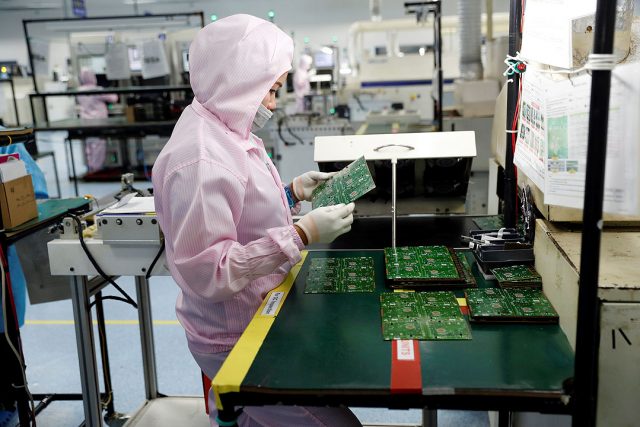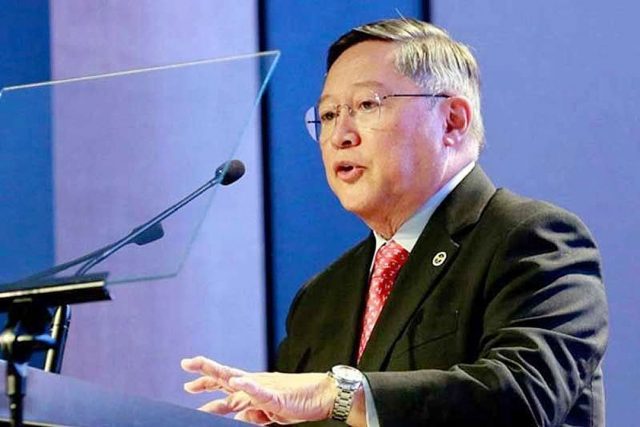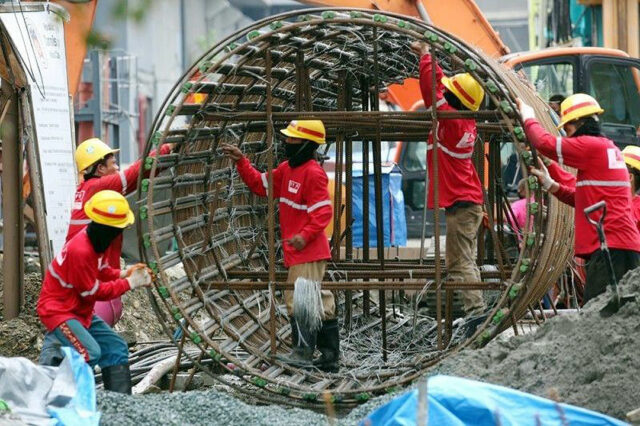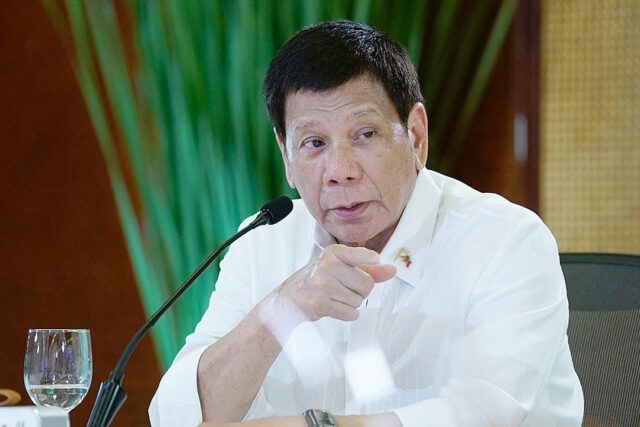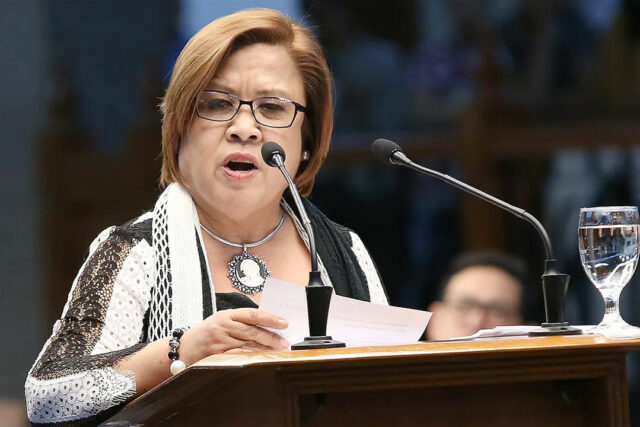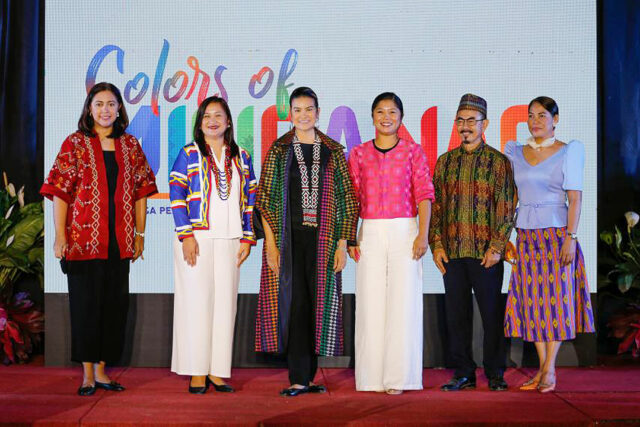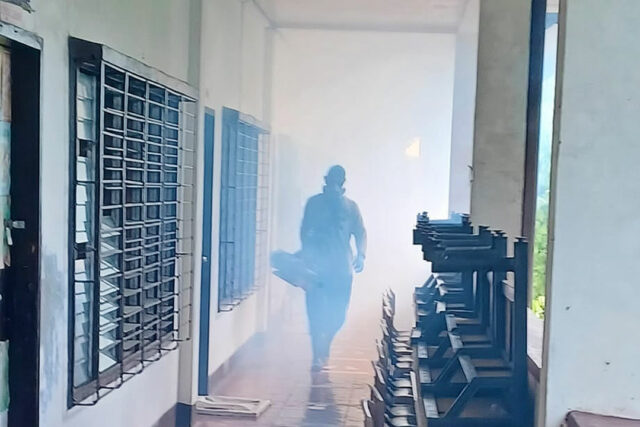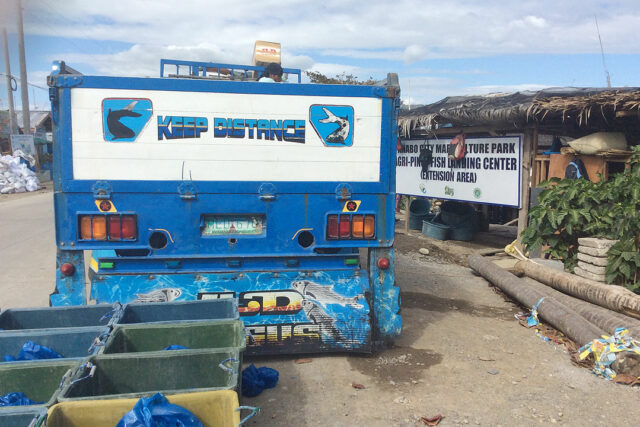By Kyle Aristophere T. Atienza and Alyssa Nicole O. Tan, Reporters
PHILIPPINE President Rodrigo R. Duterte has said he would not endorse anyone for president, with only six days left before Filipinos choose his replacement.
The tough-talking leader in a taped Cabinet meeting aired on Tuesday also asked his Cabinet to do the same.
“I don’t have a presidential candidate now and until December,” Mr. Duterte, whose six-year term ends in June, said in Filipino. “Remain neutral as well. If you have a candidate, just keep it to yourself,” he told his Cabinet officials.
He said and his Cabinet should be “free from the suspicion” of supporting any candidates.
The president has endorsed several senatorial candidates and his daughter Davao City Mayor Sara Duterte-Carpio, who is running for vice-president.
While former Senator Ferdinand “Bongbong” R. Marcos, Jr. has not received Mr. Duterte’s explicit support, a faction of the ruling party headed by the president did endorse his candidacy.
Mr. Duterte last year called Mr. Marcos a “weak leader.”
Duterte’s political adviser earlier said Mr. Marcos was the best candidate who could shield him from any “trumped up charges” once he steps down.
The International Criminal Court in September approved a full inquiry into the Duterte government’s war on drugs that has killed thousands. It suspended the probe in November as it looked at the scope and effect of the government’s request to defer it.
Meanwhile, Mr. Marcos and rival Vice-President Maria Leonor “Leni” G. Robredo visited key areas in central Philippines, where she got substantial support in the vice-presidential race against Marcos, Jr. in 2016.
Mr. Marcos and his team that includes Mr. Duterte’s daughter will hold a campaign rally for the Visayas in Guimbal town in Iloilo province.
Ms. Robredo held a stationary caravan from Iloilo Airport to Iloilo City, where she held a grand rally at a people’s park.
Mr. Marcos’s camp was hosted by a political clan of legislator Janette Loreto-Garin, who served under the administration of the late President Benigno S.C. Aquino III.
Ms. Robredo, on the other hand, was hosted by the coalition led by Iloilo City Mayor Jerry P. Treñas, a victim of the dictator’s martial law regime.
The city and province of Iloilo are considered a bailiwick of Ms. Robredo, who defeated Mr. Marcos in 2016 by a hair.
In February, both Mr. Marcos and Ms. Robredo campaigned in Iloilo, which is one of the vote-rich provinces with 1.63 million voters.
Ms. Robredo could still gain more voters this week through her house-to-house campaign, analysts said.
“Since she started campaigning, she continues to gain momentum,” Maria Ela L. Atienza, a political science professor at the University of the Philippines, said in a Viber message. “No other campaign has galvanized volunteers from different walks of life.”
The volunteer-driven campaign of Ms. Robredo is the people’s response against the overwhelming machinery and resources at Mr. Marcos’s disposal, said Cleve V. Arguelles, who teaches political science at De La Salle University.
“The thousands of volunteers leading the house-to-house campaigns and rallies of VP Leni repudiates the role of the usual political dynasties and their machineries in our elections,” he said in a text message.
“The movement for Robredo represents the highest ideals of our democracy — that of empowering the people to determine the affairs of our society,” he added.
Mr. Arguelles said the fate of the people-led campaign of the opposition candidate remains unclear because it challenges a tried and tested election strategy.
“However, if there is someone who can succeed using a volunteer-driven election strategy, it will be Robredo,” he said. “She did it in 2016 and it may also send her to Malacañang this year.”
Mr. Marcos claimed to have been cheated, but the Supreme Court dismissed his election protest last year.
Mr. Marcos, who has been criticized for his refusal to join presidential debates, has dominated presidential opinion polls.
On Monday, Pulse Asia Research, Inc. said Mr. Marcos kept his lead in its April poll, though rating did not improve. Ms. Robredo remained at a distant second.
Experts have said the last Pulse poll before the May 9 elections showed that the presidential contest had become a two-way race between Mr. Marcos and Ms. Robredo.
“Based on exit polls conducted by SWS in 2010 and 2016, a large percentage decide close to election day or on election day itself,” Ms. Atienza said.
She said many people do not consider opinion polls in their choice for president.
Arjan P. Aguirre, who teaches political science at the Ateneo De Manila University, said the two-way race would be defined by two opposing election campaign orientations.
“One uses the perfect mix of traditional clientelism, machinery-based and new media operations, while the other appropriates the unconventional people’s campaign that is anchored on the volunteerism of private individuals and entities and alignments of movements and organizations,” he said.
Meanwhile, Senator Panfilo “Ping” M. Lacson has a slim chance of winning the presidential race, analysts said.
Mr. Lacson has said opinion polls are inaccurate. His tandem with Senate President Vicente C. Sotto III relies on what they call the silent majority or thinking voters who supposedly constitute half of the eligible voters.
“Every candidate, whether it’s presidential, vice-presidential, even in the local levels, are entitled to their own political bubbles,” Froilan C. Calilung, a campaign expert and political science professor at the University of Santo Tomas (UST), said by telephone.
“This is what they would like to perceive as true based on how they assess things and how they would like their supporters to think,” he said.
“No matter how silent they may be, they could have factored in somehow in Ping Lacson’s campaign to actually at least make their presence felt and register some numbers, but 2% is way too low,” he added, referring to the lawmaker’s poll rating.
“I highly doubt the silent majority could actually deliver the knockout punch that they are expecting come election day,” he added.
In the latest Pulse Asia poll, Mr. Marcos remained the top contender, with 56% saying they would vote for him. Ms. Robredo was No. 2 with 23%.
Senator and boxing champion Emmanuel “Manny” D. Pacquiao overtook Manila City Mayor Francisco “Isko” M. Domagoso with 7%, gaining a point. The mayor lost 4 points to 4%.
Mr. Lacson remained in fifth place with 2%.
“The survey results may differ from the actual voting results, but it’s hard to feel optimistic for Senator Lacson since he is at the rear end of the latest presidential survey and his numbers have not significantly improved,” Dennis C. Coronacion, who is from the UST’s Department of Political Science, said in a Viber message.
In a statement on Tuesday, Mr. Lacson told his supporters not to get swayed by opinion polls.
“I call on all my active and silent supporters and those who truly believe in good, honest governance to go out on May 9 and cast their votes as it is the ultimate show of support that matters to Filipinos of the present and future generations,” he added. —with Norman P. Aquino


